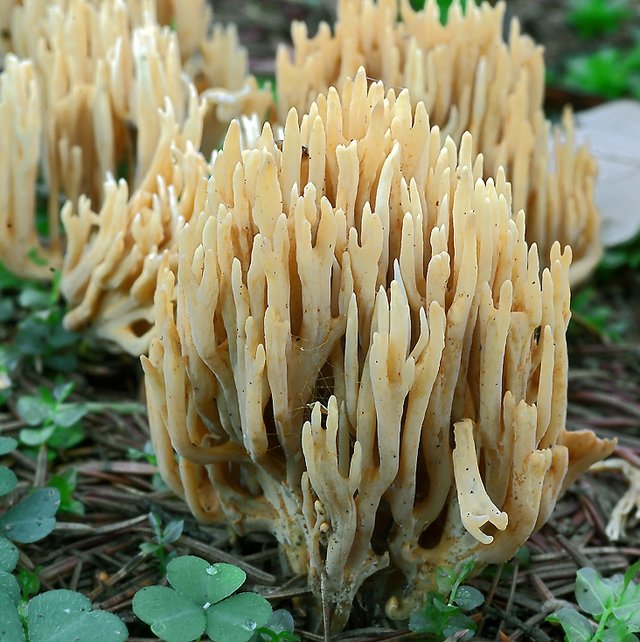Common ramaria (Ramaria eumorpha)
- Division: Basidiomycota (Basidiomycetes)
- Subdivision: Agaricomycotina (Agaricomycetes)
- Class: Agaricomycetes (Agaricomycetes)
- Subclass: Phallomycetidae (Velkovye)
- Order: Gomphales
- Family: Gomphaceae (Gomphaceae)
- Genus: Ramaria
- Type: Ramaria eumorpha (common ramaria)
:
- Spruce horn
- Ramaria Invalii
- Invalid keyboard
- Clavariella eumorpha

Ramaria vulgaris is one of the most common of the forest species of horned mushrooms. Strongly branched yellow-ocher fruiting bodies grow in small groups in shady places on dead cover under pine or spruce, sometimes they form curved lines or complete “witch circles”.
Fruit body height from 1,5 to 6-9 cm and width from 1,5 to 6 cm. Branched, bushy, with slender vertically straight branches. The color is uniform, pale ocher or ocher brown.
Pulp: fragile in young specimens, later harsh, rubbery, light.
Smell: not expressed.
Taste: with a slight bitterness.
spore powder: ocher
Summer-autumn, from early July to October. Grows on litter in coniferous forests, abundantly, often, annually.
Conditionally edible (in some reference books – edible) mushroom of low quality, used fresh after boiling. To get rid of bitterness, some recipes recommend long, 10-12 hours, soaking in cold water, changing the water several times.
The mushroom is similar to Ramaria yellow, which has a tougher flesh.
Feoklavulina fir (Phaeoclavulina abietina) in its ocher variation can also be very similar to Intval’s Hornbill, however, in Phaeoclavulina abietina, the flesh rapidly turns green when damaged.
The name “Spruce Hornbill (Ramaria abietina)” is indicated as a synonym for both Ramaria Invalii and Phaeoclavulina abietina, but it should be understood that in this case these are homonyms, and not the same species.
Photo: Vitaliy Gumenyuk









